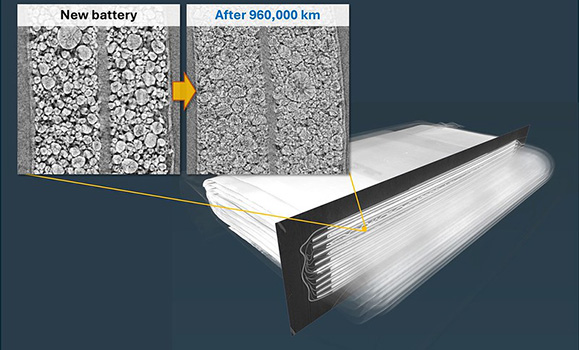The push is on around the world to increase the lifespan of lithium-ion batteries powering electric vehicles, with countries like the U.S. mandating that these cells hold 80 per cent of their original full charge after eight years of operation.
Researchers from Dalhousie University used the Canadian Light Source (CLS) at the University of Saskatchewan to analyze a new type of lithium-ion battery material – called a single-crystal electrode – that's been charging and discharging non-stop in a Halifax lab for more than six years.
They found it lasted more than 20,000 cycles before it hit the 80 per cent capacity cut-off. That translates to driving a whopping eight million kilometres.
Their research, published recently in Journal of The Electrochemical Society, compared the new type of battery, which has only recently come to market, to a regular lithium-ion battery that lasted 2,400 cycles (roughly 960,000 km) before reaching the 80 per cent cut-off.
Toby Bond, a PhD candidate at Dalhousie and senior scientist at the CLS, says they wanted to understand how damage and fatigue inside a battery progresses over time and how it can be prevented.
 Ìý
Ìý
When they peered inside the two batteries, they found there was extensive microscopic cracking in the regular battery's electrode material caused by repeated charging and discharging, leading it to eventually be pulverized.
The single crystal electrode battery, however, showed almost no signs of mechanical stress and looked very much like a brand-new cell. If these batteries can outlast the rest of the EV by such a large amount and still be in good shape internally, that makes them ideal candidates for reuse or repurposing in other applications – like storing energy for intermittent wind and solar farms.

